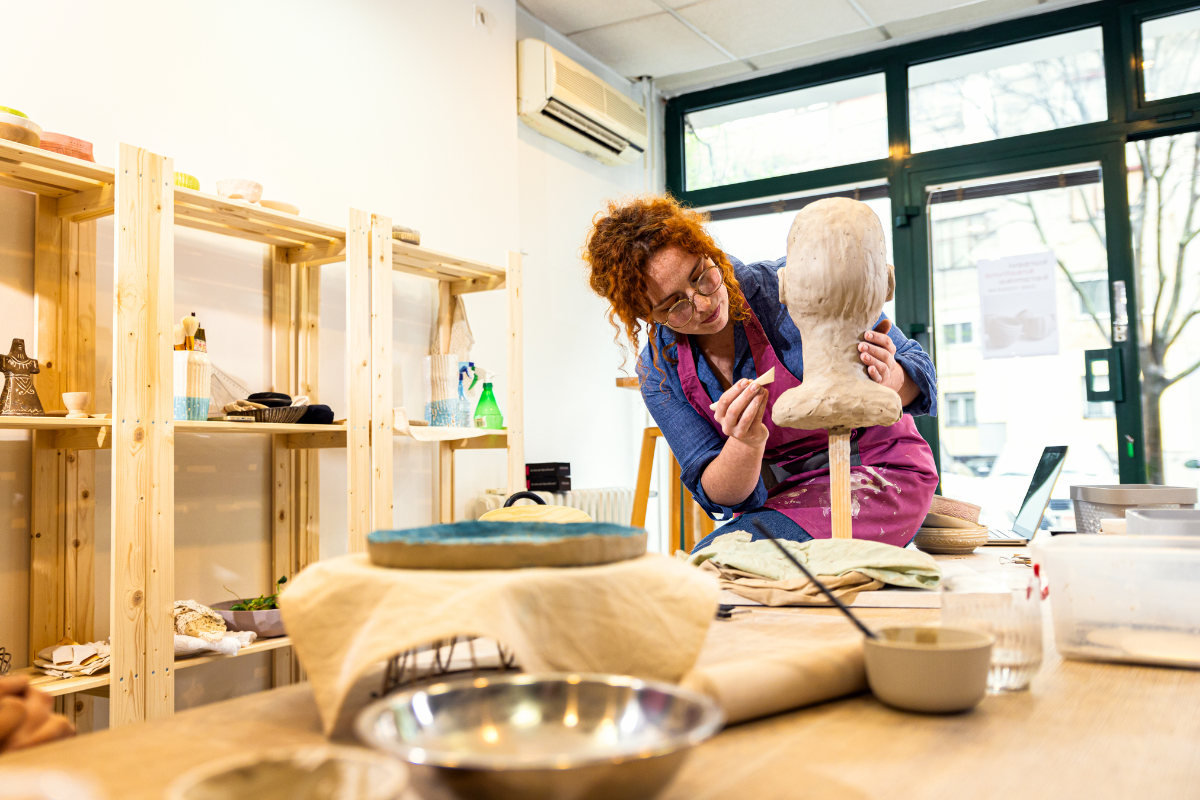
Photo: Zoran Zeremski/iStock
Positive impact of Ireland’s basic income pilot continues
A year into the pilot, artists receiving a weekly stipend are spending more time on their practice per week, less time working in other sectors and are suffering less from depression and anxiety.
Artists and creative arts workers receiving a weekly stipend as part of Ireland’s Basic Income for the Arts pilot are spending eight hours a week more on their artistic work, reducing their hours worked outside the arts and investing €550 more a month into their practice, according to a report analysing the first year of the scheme.
The pilot is offering up to 2,000 randomly selected participants €325 (£276.78) a week in monthly instalments between October 2022 and October 2025. A further 1,000 artists who do not receive payment are participating as a control group.
An impact assessment into the scheme’s first year found the payment is having a consistent, positive impact across almost all indicators, including practice development, sectoral retention and well-being.
READ MORE:
- Positive early findings for Ireland's basic arts income pilot
- ‘Extremely alarming’ pay gap in Ireland’s creative industries
Compared with the control group, recipients of the stipend are nine percentage points more likely to be able to sustain themselves through arts work alone and are spending 2.7 fewer hours a week working outside the sector. They are also almost eight percentage points more likely to have completed new works in the last six months.
Recipients of the payment are six percentage points less likely to have felt downhearted or depressed and more than eight percentage points less likely to have experienced anxiety compared with the control group. Life satisfaction was also found to be more than half a point higher in recipients of the stipend.
“We are told again and again that pursuing the arts full-time is a bad idea: if you are not from a family or background where there are artists, it can feel like a very risky choice. The basic income for artists still feels, every month when it lands, like a release from that risk,” one recipient said. “Though it still is something I have kept deeply private, it truly feels like a freedom I never thought I would be afforded.”
Of the additional €550 participants are investing in the arts each month – equivalent to around 40% of their monthly stipend – the majority is going towards equipment and materials, advertising and marketing, workspaces, and work travel.
Meanwhile, the additional eight hours a week stipend recipients are spending on their creative practice breaks down into, on average, 3.5 hours spent more making work, 2.5 hours on research and experimentation, 1.5 hours on management and administration and half an hour on training.
The latest impact assessment says the only areas the stipend is yet to have any statistically significant impact on is in the prevalence of unpaid work, the average price of commissions, the likelihood to apply for arts funding or the prevalence of artistic residencies.
Impact plateaus
Despite the continual positive impact of the stipend, the latest assessment notes that the impact outlined in these results, which covers up to October 2023, is slightly lower than the initial impact from the first assessment, which covered October 2022 to April 2023.
“This might be a sign that after the initial positive income shock, recipients are adjusting to their new economic circumstances. An alternative explanation is that due to the high degree of seasonality in the arts sector, October data and April data are capturing two different contexts,” the report says.
“Further insight on seasonality effects will be available in the next paper, when we will have access to two sets of data for October and two sets of data for April.”
Control group
Concerns over the cost of living were more pronounced in the control group. Those not receiving the stipend were found to be 18.8 percentage points more likely to be having difficulty making ends meet.
Testimonials from the control group echoed the statistics, with some mentioning thoughts of retraining or practising overseas. One member of the control group said: “As a practising artist, I am just about able to survive, but it is very much a hand-to-mouth existence.”
“If people can’t afford basic things like a place to live, how do you expect them to focus on creativity and making good quality arts work?” said another.
In comparison, some of the payment recipients shared that the stipend had been a lifeline amid rising costs.
“I suffered illness which I am now coming out of… it meant my personal project suffered, but the fact I had financial support meant I could focus on recovery without making myself more ill or shelving it altogether,” one recipient said.
Join the Discussion
You must be logged in to post a comment.